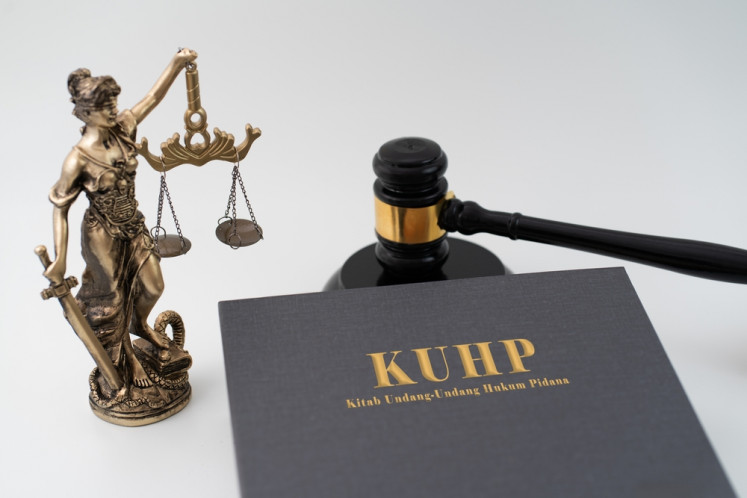Popular Reads
Top Results
Can't find what you're looking for?
View all search resultsPopular Reads
Top Results
Can't find what you're looking for?
View all search resultsSalak wine
Innovation: Salak wine grower Nyoman Warta with recently bottled salak wine and a new product, a wine made from purple sweet potato, Ubi Ungu
Change text size
Gift Premium Articles
to Anyone
I
span class="caption" style="width: 398px;">Innovation: Salak wine grower Nyoman Warta with recently bottled salak wine and a new product, a wine made from purple sweet potato, Ubi Ungu.There are several varieties of salak grown in various parts of Indonesia.
One of the most famous is Bali’s “Sugar Salak”, known for its juicy sweetness. This is the Holy Grail of salak, fetching top dollar at the market and best served fresh from the palm.
But many salak varieties are better for a bit of human resourcefulness, such as salak chips and sweets, or even as wine.
Fifty-seven-year-old Nyoman Warta says he has “been growing salak all my life. This farm has been handed down from our ancestors for generations. We started making wine from salak a few years ago and it is selling very well,” says Warta, seated on his home veranda overlooking salak fields that roll away down the hill in a mist of green.
Salak wine, he says, is sweet and dry with an alcohol content of 13.5 percent, similar to wine made with grapes.
The process is simple, with mature salak cleaned, chopped and placed in tanks with sugar and yeast to ferment. “There is a two-week fermentation period, then we press the wine and place it in a tank for the sediment to fall. That takes about six months with filtering done monthly,” says Warta of the wine that takes on a honey gold color over time.
Like the Werdhi Guna Food cooperative, Karangasem’s salak wine industry got its start with local government assistance.
“The local government funded the fermentation tanks, filters and other tools for the wine-making process,” says Warta, who can produce 1,000 bottles of wine per month that sell for around US$10 per bottle. It takes 4 kilograms of fresh salak to make one 750-milliliter bottle of wine, says Warta. When in season, fresh salak can fall to just 10 cents a kilogram, so through wine-making farmers can earn several dollars for 4 kg of fruit versus 40 cents — or the difference between viable and non-viable farming.
Salak wine is only produced in the Sibetan area, according to Warta.
“People have been farming salak here for a long time. Perhaps it is the soil and climate that is perfect for salak. The taste of Sibetan salak is famous and now to be making wine from this fruit is good for the farmers, because in season the price of salak falls sharply. Selling our salak as wine is value-adding so farmers can make a better living,” says Warta of a centuries old farming tradition that with smart marketing and government assistance looks set to continue into the future.
— JP/Trisha Sertori










